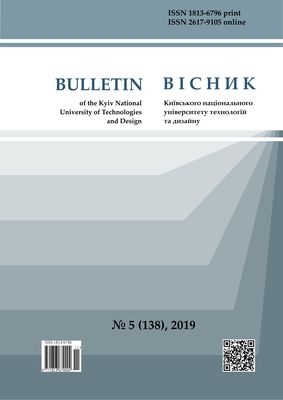Influence of additives of nanosized aluminum oxide on the structure and rheological properties of the polypropylene / copoliamide blends
DOI:
https://doi.org/10.30857/1813-6796.2019.5.12Keywords:
polymers, mixtures, nano-additive, morphology, viscosity, elasticityAbstract
Investigation of the effect of the concentration of aluminum oxide nanoparticles on the micro- and macro-rheological properties of the melt of a polypropylene / copolyamide (PP / CPA) mixture to control the morphology of nanofilled composites. The starting polymers and nano-additive were melt blended on a worm-disk extruder. The degree of dispersion of the component of the dispersed phase in the matrix was evaluated by micrographs of cross sections of the extrudates of the mixtures. The types of PP structures and their dimensional characteristics were studied using an optical microscope. The effective viscosity of the melts was determined on an MB-2 micro viscometer, and elasticity was calculated as the ratio of the extrudate and die diameters. It is shown that the introduction of a PP / CPA mixture (0.1÷3.0) mass. % Al2O3 nanoparticles makes it possible to control the process of structure formation of the component of the dispersed phase. In this case, the average diameter of PP microfibrils decreases and their mass fraction increases. The maximum effect was achieved when the content of nanoparticles 1.0 mass.%. It has been established that the macro-rheological properties of melts of nanofilled systems are determined by their morphology. The formation of anisotropic structures (PP microfibrils) with smaller diameters causes a decrease in viscosity and an increase in the elasticity of the melts of mixtures, in contrast to similar indicators for PP and CPA. It was shown that Al2O3 nanoparticles do not affect the type of morphology of the thermodynamically incompatible PP / CPA mixture - in nanofilled compositions, as in the initial one, a microfibrillar structure is formed. The modifying effect of nanoadditives is manifested in the formation of a larger number of PP microfibrils and a decrease in their dimensional characteristics. The studied nanoparticle does not interfere with the stable processing of the PP / SPA mixture into fibers and films on extrusion equipment and does not complicate the process of extraction of the matrix polymer from composite extrudates. The introduction of Al2O3 nanoparticles will make it possible to obtain composite products and fine-fiber materials with improved characteristics due to the regulation of phase morphology.

